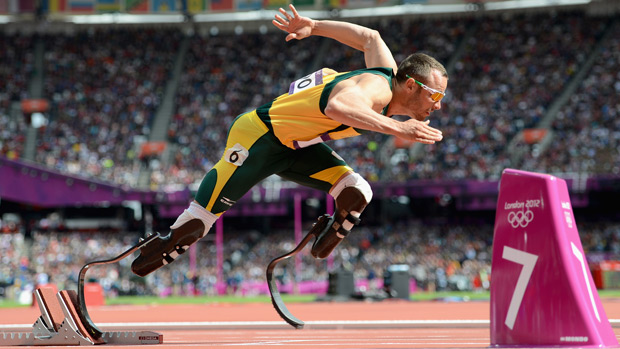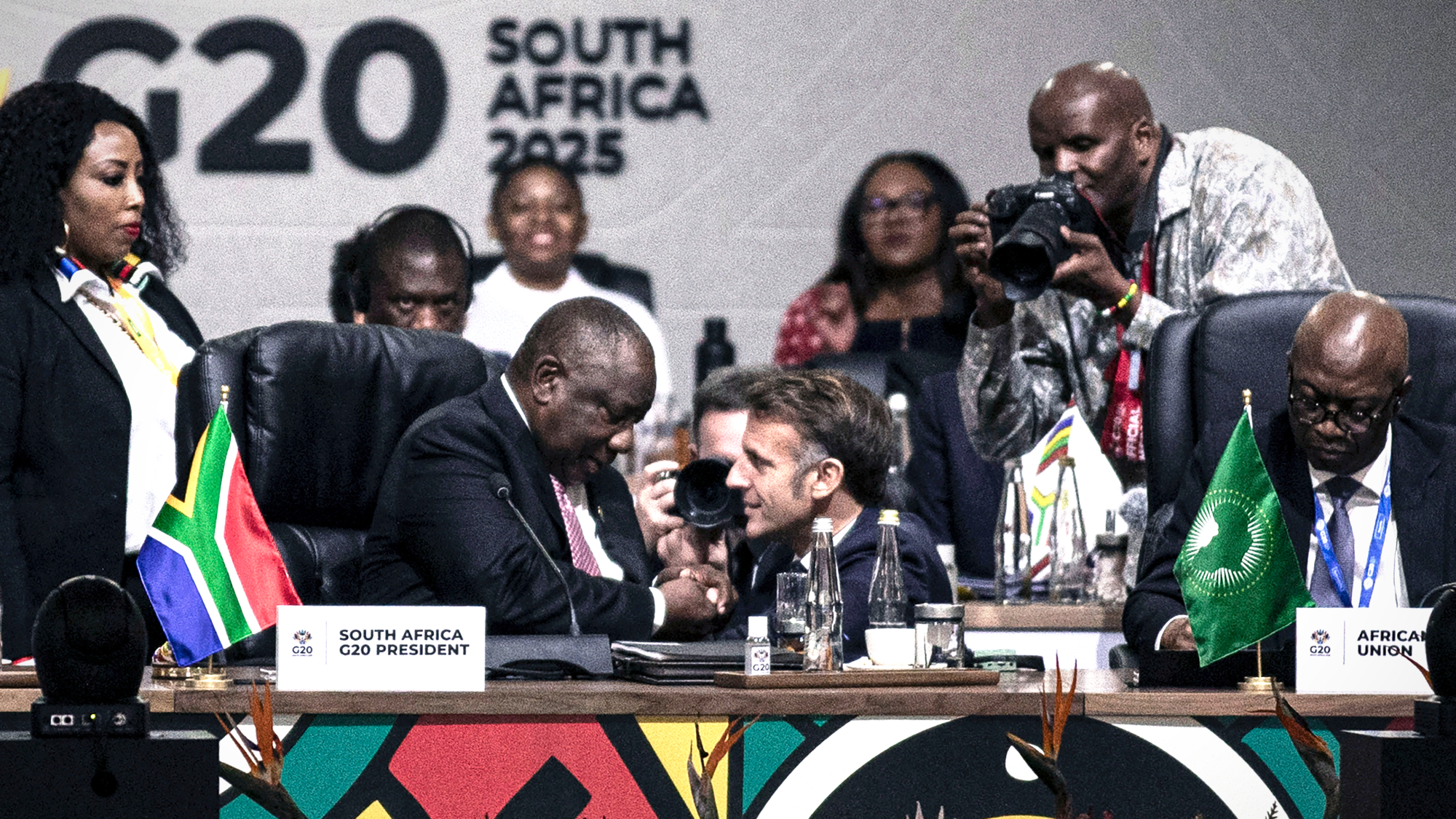Brand Pistorius: rise and fall of a marketing phenomenon
'Blade Runner' ticked all the boxes as a marketing tool, says Simon Chadwick. Except he was human

BY THE END of 2012, it appeared as though Oscar Pistorius had the world at the tip of his carbon fibre blades. A supreme athlete, successful Olympian and commercial phenomenon, Pistorius was a poster-boy, an icon and a sound business proposition.
Indeed, organisations such as Forbes and Sports Pro Media identified the South African Paralympic runner as being one of the most marketable athletes in world sport. What could possibly go wrong?
With his highly lucrative sponsorship and endorsement deals now in tatters and his iconography more notorious than celebratory, Pistorius stands charged with the murder of his partner Reeva Steenkamp. Something did go wrong, and big time.
The Week
Escape your echo chamber. Get the facts behind the news, plus analysis from multiple perspectives.

Sign up for The Week's Free Newsletters
From our morning news briefing to a weekly Good News Newsletter, get the best of The Week delivered directly to your inbox.
From our morning news briefing to a weekly Good News Newsletter, get the best of The Week delivered directly to your inbox.
Notwithstanding the horrific events of February 2013 and the allegations being made against Pistorius, there are so many issues bound-up in this case, ranging from the fragile psychology of some elite performance athletes through to the pressures we place on such “super-humans”, and the way in which athlete transgression is handled.
But it is his commercial activities that are pertinent here, particularly in the way “Brand Pistorius” rose and then so dramatically fell.
Building the brand
Despite a somewhat troubled upbringing – the early death of his mother, difficulty fitting in to the regular school system, allied to the challenges of his physical condition – Pistorius first won Paralympic Gold in the 100 metres during the 2004 Athens Games, aged just 18.
A free daily email with the biggest news stories of the day – and the best features from TheWeek.com
Success on the track soon began to pull in some big money for Pistorius. At its peak, his sponsorship and endorsement portfolio was thought to earn him more than US$2m per year. Where some people might have seen a disabled athlete, companies and brands such as Nike, Oakley and French fragrance manufacturer Thierry Mugler spied a commercial opportunity.
Given Pistorius’ background, and the often less than flattering portrayal of Paralympic athletes in some countries, his commercial success poses some interesting questions about what the likes of Thierry Mugler saw in him in the first place.
Ticking the boxes
Sports Pro Media, in its annual league of the world’s most marketable athletes, uses six criteria: value for money, age, home market, charisma, willingness to be marketed and crossover appeal.
Drawing from research I carried out with Nicholas Burton of Ryerson University in Canada on athlete brands, to this list one might add: off-track activities, physical characteristics, degree of success and reputation. Others have also identified an athlete’s symbolism, life story and position as a role model as being significant in building their potential as commercial entities.
Pistorius had all the above. If there were more boxes he probably would have ticked them too.
He even had unique, relatively left-field attributes. The guy was “blade runner”, the hi-tech face of 21st-century sport, a man who made the impossible possible. He was a Paralympic athlete like no other before, someone who might even have been able to beat his able-bodied rivals.
Throw into the mix a great motto – “you’re not disabled by the disabilities you have, you are able by the abilities you have” – and an agent who was prepared to market the Pistorius brand to the world of big business and one then has all of the ingredients necessary for commercial success.
Saving the brand
While Pistorius must surely be up there with the greatest of sports brands, athlete marketability doesn’t work like branding in other sectors. It’s more volatile and less resilient. Other businesses can escape hugely negative publicity with their branding intact: Perrier managed to survive as a brand despite the benzene scare it faced; and Hoover, in spite of the free air tickets debacle, survives today.
Human frailties are a different matter, as Lance Armstrong, Tiger Woods and many others have found to their cost. Nothing as serious as a murder charge is required. A careless tackle, a pulled ligament or a red card can seriously undermine the strength of the brand and soon the money will stop flowing.
And athlete brands change too, as ageing gives their commercial appeal a natural half-life. No sports man or woman can continue at the top ad infinitum: they run slower, are not able to jump as high and eventually they are taken over by the relentless march of time, eroding the very essence of their initial brand success. Compare this with, say, Twinings Tea, which has been around since 1706 – even Ryan Giggs cannot enjoy such longevity.
This is what has made Brand Beckham such an engrossing story. Never a brilliant footballer, Becks was nevertheless able to extract value from his brand while the going was good. But then, as he grew older, well advised and managed, his brand began morphing into something related to but actually different from what he had always been – Beckham is now a general sport and leisure brand rather than a specifically football one.
As Pistorius stands in the dock, we should mourn the loss of Steenkamp and reserve thoughts for her family and friends. Yet whatever the outcome of the trial, we must also keep in mind that there is something both sad and telling about Pistorius and his downfall. He was just what the world of Paralympic sport needed, a role model for so many people and someone who helped bring the Games into the mainstream.
In many ways, he was also symbolic of this sporting age: a strong brand that stood out in the marketplace, an athlete who engaged consumer attention and a person who added value to the brands that associated with him.
Ultimately though, he has simply been a human being. No matter what happened that February night in 2013, it is difficult for athlete brands to withstand either the scrutiny or the damage that such devastating events inevitably bring.
Simon Chadwick is a professor of Sport Business Strategy at Coventry University. This article was originally published on The Conversation.
-
 Heavenly spectacle in the wilds of Canada
Heavenly spectacle in the wilds of CanadaThe Week Recommends ‘Mind-bending’ outpost for spotting animals – and the northern lights
-
 Facial recognition: a revolution in policing
Facial recognition: a revolution in policingTalking Point All 43 police forces in England and Wales are set to be granted access, with those against calling for increasing safeguards on the technology
-
 Codeword: December 14, 2025
Codeword: December 14, 2025The daily codeword puzzle from The Week
-
 Femicide: Italy’s newest crime
Femicide: Italy’s newest crimeThe Explainer Landmark law to criminalise murder of a woman as an ‘act of hatred’ or ‘subjugation’ but critics say Italy is still deeply patriarchal
-
 Brazil’s Bolsonaro behind bars after appeals run out
Brazil’s Bolsonaro behind bars after appeals run outSpeed Read He will serve 27 years in prison
-
 South Africa wraps up G20 summit boycotted by US
South Africa wraps up G20 summit boycotted by USSpeed Read Trump has been sparring with South Africa in recent months
-
 Americans traveling abroad face renewed criticism in the Trump era
Americans traveling abroad face renewed criticism in the Trump eraThe Explainer Some of Trump’s behavior has Americans being questioned
-
 Nigeria confused by Trump invasion threat
Nigeria confused by Trump invasion threatSpeed Read Trump has claimed the country is persecuting Christians
-
 Sanae Takaichi: Japan’s Iron Lady set to be the country’s first woman prime minister
Sanae Takaichi: Japan’s Iron Lady set to be the country’s first woman prime ministerIn the Spotlight Takaichi is a member of Japan’s conservative, nationalist Liberal Democratic Party
-
 Russia is ‘helping China’ prepare for an invasion of Taiwan
Russia is ‘helping China’ prepare for an invasion of TaiwanIn the Spotlight Russia is reportedly allowing China access to military training
-
 Interpol arrests hundreds in Africa-wide sextortion crackdown
Interpol arrests hundreds in Africa-wide sextortion crackdownIN THE SPOTLIGHT A series of stings disrupts major cybercrime operations as law enforcement estimates millions in losses from schemes designed to prey on lonely users